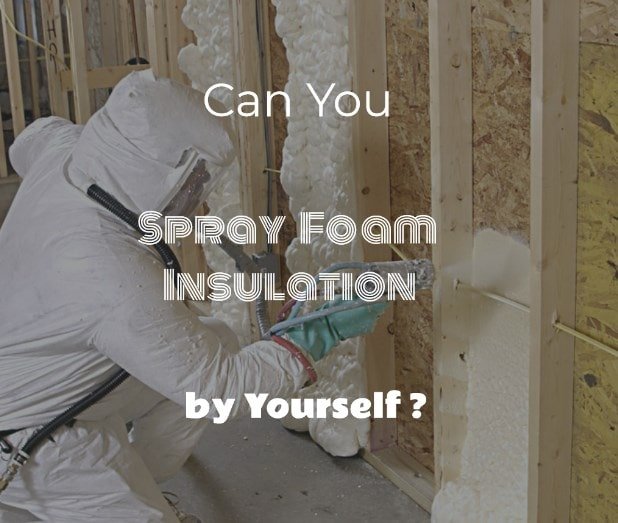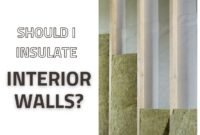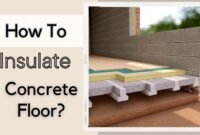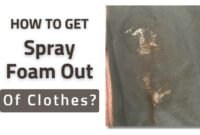Insulating your own home has become increasingly popular due to the abundance of online tutorials and resources. Many people are drawn to DIY projects for their cost savings and the satisfaction of learning a new skill. One common question is: Can you spray foam insulation yourself?
Understanding Spray Foam Insulation
Installing insulation, especially in areas like wall cavities and rim joists, varies in complexity, with spray foam insulation being particularly challenging. This method, which includes both open-cell and closed-cell spray foam, requires precise application to effectively seal all air leaks, particularly in open-wall spaces.
Properly sealing these areas is essential for reducing energy bills and enhancing your home’s overall energy efficiency.
Key Considerations
When considering replacing your home’s insulation, it’s important to evaluate the ease of completing the project yourself and to recognize when it might be too complex. Some tasks may not be suitable for DIY, while others could be manageable for a skilled homeowner.
Can You Do Spray Foam Insulation Yourself?
Small areas prone to air leaks, such as around doors, windows, and rim joists, are well-suited for DIY spray foam insulation projects. Addressing these specific areas, including wall cavities and other open-wall spaces, allows homeowners to save money by avoiding the minimum fees typically charged by professionals for small jobs.

DIY Spray Foam Insulation Kits
DIY spray foam insulation kits are widely available at home improvement stores and offer a cost-effective solution.
Cost Considerations
The cost of spray foam insulation varies depending on the tank size, ranging from $48 to $826. When deciding whether to install spray foam insulation yourself, especially in complex areas like wall cavities or the rim joist, consider both the material costs and potential savings on professional installation fees. Weigh these costs against the project’s complexity and your skill level.
Practical Tips for DIY Spray Foam Insulation
One advantage of this project is the flexibility to work on your schedule without waiting for someone else. However, it’s crucial to learn how to use the spray foam kit properly.
Usage and Application
Using a spray foam kit is not as easy as it seems. Ensuring the mixture is correctly proportioned is essential; otherwise, the insulation won’t adhere properly and may eventually fall off.
Read also: How to Remove Cured Spray Foam from Hands
Improperly connecting the hose to the canister or encountering a clog in the hose or gun can result in wasted mixture. You’ll need to replace the nozzle within 30 seconds if you pause, as it will clog quickly.
Achieving Proper Insulation
For effective insulation and compliance with building codes, especially in critical areas like wall cavities and rim joists, the spray foam must be applied evenly to achieve the right R-value. This measure of insulation’s effectiveness is crucial for ensuring energy efficiency in your home.
Uneven application, particularly in open-wall spaces, can result in less effective insulation, thereby impacting your home’s overall energy efficiency. This is a common issue for DIY projects using spray foam insulation. If the insulation is too thick or too thin, it will undermine your efforts to improve energy efficiency.
Read also: Does Spray Foam Insulation Reduce Noise?
Professional vs. DIY Installation
When considering installing spray foam insulation, it’s crucial to assess the size and complexity of the area needing insulation, including wall cavities and rim joists. A DIY approach with a spray foam insulation kit may be feasible for minor projects, such as small open wall areas.
Expert Insights
Professional installation ensures consistent application and coverage. Professionals are trained to handle the equipment and materials, minimizing health risks and ensuring that the insulation meets building codes. They also provide warranties and guarantees on their work, adding an extra layer of trustworthiness.
Case Study: Homeowner’s Experience
Consider a homeowner who attempted to insulate their basement using a DIY spray foam kit. They faced challenges in evenly applying the foam, leading to sections that were either over-insulated or under-insulated. This resulted in inadequate energy efficiency and the need for additional professional intervention to correct the issues, ultimately increasing the project’s overall cost.
Conclusion
While DIY spray foam insulation can be a cost-effective solution for small areas and minor projects, it’s essential to understand the complexities and potential pitfalls. Professional installation is often recommended for larger or more complex spaces to ensure optimal performance, compliance with building codes, and overall energy efficiency.
By balancing the cost savings of DIY with the expertise and guarantees offered by professionals, homeowners can make an informed decision that best suits their needs and capabilities.


